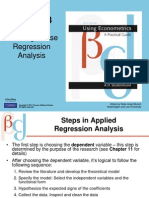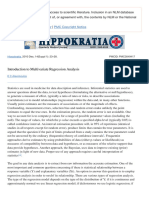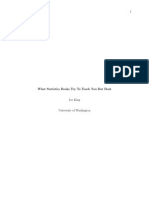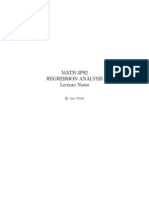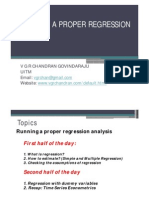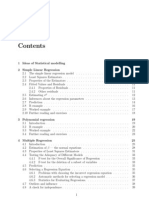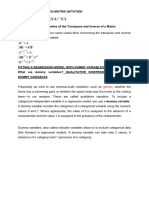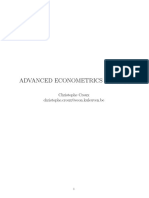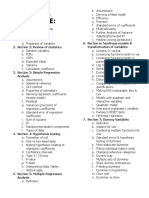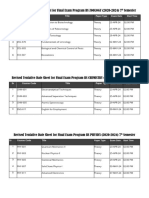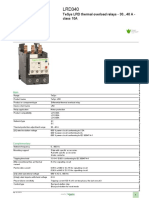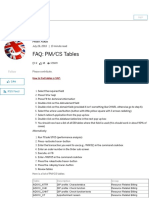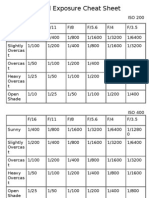0% found this document useful (0 votes)
15 views29 pagesChapter3 Final
Chapter 3 of 'A Practical Guide To Using Econometrics' outlines the steps in applied regression analysis, including reviewing literature, specifying the model, hypothesizing coefficient signs, collecting and cleaning data, estimating the equation, and documenting results. It emphasizes the importance of theoretical models and careful selection of independent variables to avoid specification errors. The chapter also discusses the use of dummy variables for qualitative data in regression analysis.
Uploaded by
Rabiatul AdawiyahCopyright
© © All Rights Reserved
We take content rights seriously. If you suspect this is your content, claim it here.
Available Formats
Download as PDF, TXT or read online on Scribd
0% found this document useful (0 votes)
15 views29 pagesChapter3 Final
Chapter 3 of 'A Practical Guide To Using Econometrics' outlines the steps in applied regression analysis, including reviewing literature, specifying the model, hypothesizing coefficient signs, collecting and cleaning data, estimating the equation, and documenting results. It emphasizes the importance of theoretical models and careful selection of independent variables to avoid specification errors. The chapter also discusses the use of dummy variables for qualitative data in regression analysis.
Uploaded by
Rabiatul AdawiyahCopyright
© © All Rights Reserved
We take content rights seriously. If you suspect this is your content, claim it here.
Available Formats
Download as PDF, TXT or read online on Scribd
/ 29


